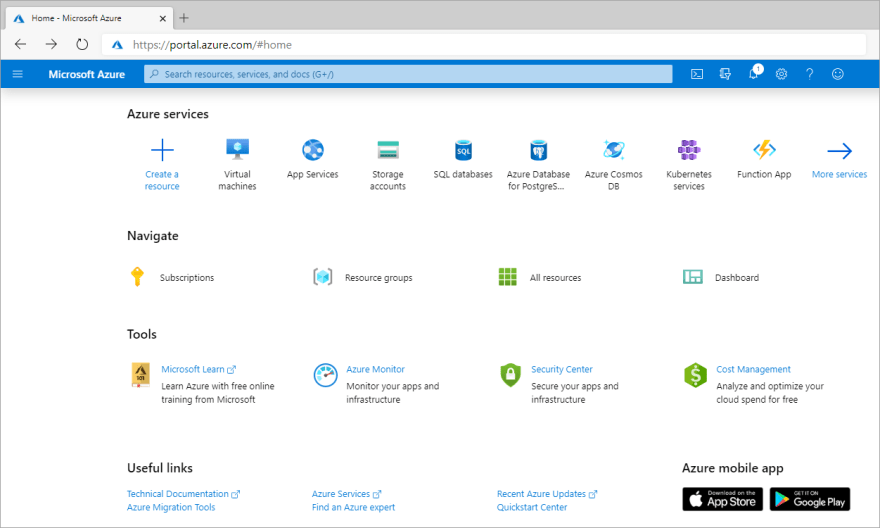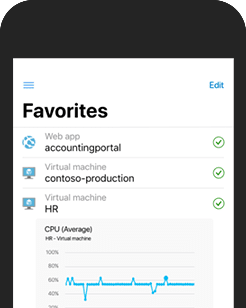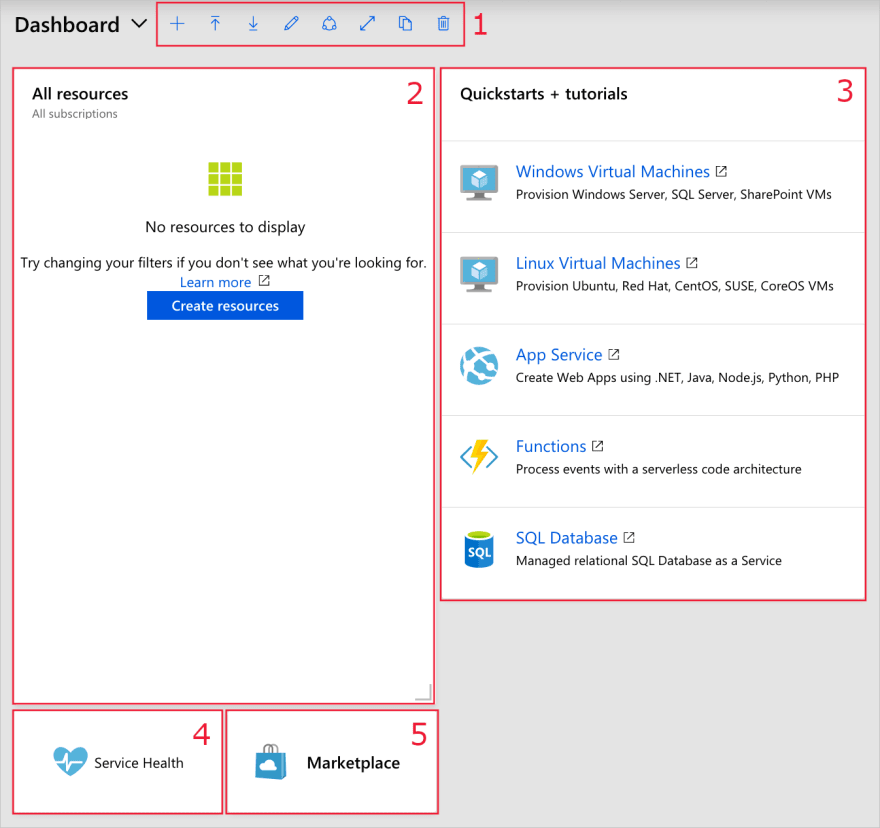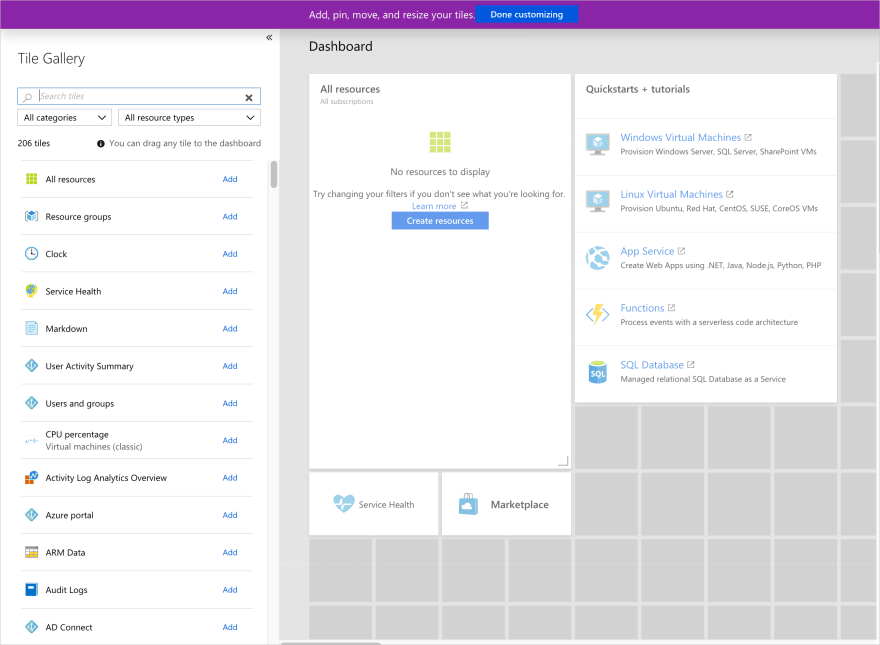AZ-900 Notes: Azure Portal

Sudha Chandran B C
Posted on August 5, 2020

In this notes you'll:
- Learn about Azure management options
- Navigate the Azure portal
- Customise the dashboard
- Learn how to opt in to preview services and features
Azure management options
As a new user, the Azure portal is likely to be the primary way you will interact with Azure. The Azure portal lets you create and manage all your Azure resources.
Tools that are commonly used for day-to-day management and interaction include:
- Azure portal for interacting with Azure via a Graphical User Interface (GUI)
- Azure PowerShell and Azure Command-Line Interface (CLI) for command line and automation-based interactions with Azure
- Azure Cloud Shell for a web-based command-line interface
- Azure mobile app for monitoring and managing your resources from your mobile device
Azure portal
The Azure portal is a public website that you can access with any web browser. Once you sign in with your Azure account, you can create, manage, and monitor any available Azure services.
You can customize the dashboard by moving and resizing tiles, and displaying services you're interested in.
Azure PowerShell
Azure PowerShell is a module that you can install for Windows PowerShell or PowerShell Core, which is a cross-platform version of PowerShell that runs on Windows, Linux, or macOS.
Azure PowerShell enables you to connect to your Azure subscription and manage resources.
For example, Azure PowerShell provides the New-AzVM command that creates a virtual machine for you inside your Azure subscription.

Azure CLI
Azure CLI is a cross-platform command-line program that connects to Azure and executes administrative commands on Azure resources which can run on Windows, Linux, or macOS.
Azure Cloud Shell
Azure Cloud Shell is an interactive, authenticated, browser-accessible shell for managing Azure resources.
Cloud Shell has a suite of developer tools, text editors, and other tools available, including:
- Developer Tools: .NET Core, Python, Java, Node.js, Go
- Editors: code (Cloud Shell Editor), vim, nano, emacs
-
Other tools: git, maven, make, npm, and more....

Azure mobile app
The Microsoft Azure mobile app allows you to access, manage, and monitor all your Azure accounts and resources from your iOS or Android phone or tablet.
Once installed, you can:
- Check the current status and important metrics of your services
- Stay informed with notifications and alerts about important health issues
- Quickly diagnose and fix issues anytime, anywhere
- Review the latest Azure alerts
- Start, stop, and restart virtual machines or web apps
- Connect to your virtual machines
- Manage permissions with role-based access control (RBAC)
- Use the Azure Cloud Shell to run saved scripts or perform ad hoc administrative tasks
Other options
There are also Azure SDKs for a range of languages and frameworks, and REST APIs that you can use to manage and control Azure resources programmatically.
Azure Marketplace:
The Azure Marketplace is often where you start when creating new resources in Azure. The Marketplace allows customers to find, try, purchase, and provision applications and services from hundreds of leading service providers, all certified to run on Azure.
Using Azure Marketplace, you can provision end-to-end solutions quickly and reliably, hosted in your own Azure environment.
Navigate the Azure portal:
- Resource panel: left-hand sidebar of the portal, which lists the main resource types.
- Status bar: at the top-right of the screen contains
- Cloud Shell: an interactive, browser-accessible shell for managing Azure resources.
- Directory and subscription: you can change between subscriptions. or change to another directory.
- Notifications: lists the last actions that have been carried out, along with their status.
- Help pane: show the Help pane which can include: What's new, Azure roadmap, Launch guided tour,Keyboard shortcuts,Show diagnostics,Privacy statement.
- Help and support options: opens the main help and support area for the Azure portal and includes documentation options for a variety of common questions.
- Feedback pane: The smiley face icon opens the Send us feedback pane. Profile settings: Sign in with another account, or sign out entirely, View your account profile, where you can change your password. Settings: Select the gear icon to change the Azure portal settings. like
- Inactivity sign out delay
- Default view when you first sign in
- Flyout or docked option for the portal menu
- Color and contrast themes
- Toast notifications (to a mobile device)
- Language and regional format

Azure Advisor
Azure Advisor is a free service built into Azure that provides recommendations on high availability, security, performance, operational excellence, and cost. You can view recommendations in the portal or download them in PDF or CSV format.
With Azure Advisor, you can:
- Get proactive, actionable, and personalized best practices recommendations.
- Improve the performance, security, and high availability of your resources as you identify opportunities to reduce your overall Azure costs.
- Get recommendations with proposed actions inline.
https://docs.microsoft.com/en-us/learn/modules/tour-azure-portal/media/5-help-icon.png
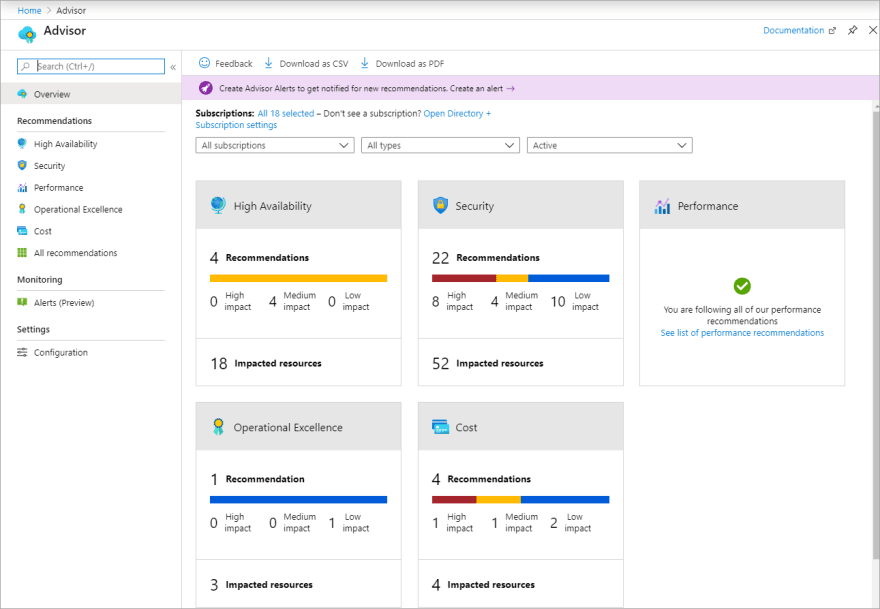
Azure Portal dashboards
A dashboard is a customizable collection of UI tiles displayed in the Azure portal. You add, remove, and position tiles to create the exact view you want, and then save that view as a dashboard.
- Multiple dashboards are supported, and you can switch between them as needed.
- You can even share your dashboards with other team members.
- Dashboards are stored as JavaScript Object Notation (JSON) files.
The default web parts are
- Dashboard controls
- All resources tile
- Quickstarts + tutorials tile
- Service Health tile
- Marketplace tile
At the top of the dashboard are the controls that enable you to create, upload, download, edit, and share a dashboard.
Also you can
- Dashboard in edit mode:
- You can Change tile sizes.
- Change tile settings.
- Edit a dashboard by changing the JSON file.
- Reset a dashboard.
- Share or unshare a dashboard.
You can even:
- Switch to a shared dashboard
- Display a dashboard as a full screen
- Clone a dashboard
- Delete a dashboard
- Reset a dashboard
Access public and private preview features
With Azure Preview Features, you can test beta and other pre-release features, products, services, software, and regions.
Feature preview categories
There are two types of previews available:
- Private Preview. An Azure feature marked "private preview" is available to specific Azure customers for evaluation purposes. This is typically by invite only and issued directly by the product team responsible for the feature or service.
Public Preview. An Azure feature marked "public preview" is available to all Azure customers for evaluation purposes. These previews can be turned on through the preview features page as detailed below.
You can find Azure preview features in the portal by selecting Create a resource in the - resource panel and searching preview.
You can Provide feedback on preview features
You can also Get notified about GA releases

Posted on August 5, 2020
Join Our Newsletter. No Spam, Only the good stuff.
Sign up to receive the latest update from our blog.
